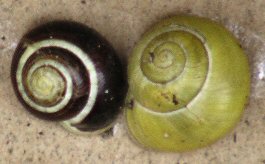Morpeth Wildlife Database
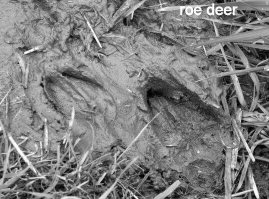
Footprints of a roe deer in the winter mud in the Bluebell Woods. Roe deer are common in the area but are most frequently seen early in the morning. Photo: AWD
We will be adding records over the coming months. We hope to provide a record of the current flora and fauna of a corridor about 2 miles wide on either side of the river Wansbeck. We have started with a list of the lichens (provided by Dr Janet Simkin) and a provisional list of bryophytes. We are working on lists for fungal fruiting bodies. Mapping the vascular plants is underway but may take a year or so to complete. At present we have few invertebrate records so we welcome any observations - and especially expertise in any subject!
Lichens - the valley and town have a poor lichen flora, largely because of a century of air pollution from coal fires. However, the huge reduction in pollution over the last decade has resulted in an invasion and expansion of a number of species. Now there are lichens growing in the town in places that were bare just a few years ago. Photos of the commoner species are here and you can also get a list of all the lichens found so far.
Another recent trend is for an increase in the amount of 'fixed' nitrogen being deposited from the air. This nitrate and ammonium originates from vehicles, other fossil fuels and agriculture. It is changing the lichen (and flowering plant) flora of many parts of the UK. Some of the nitrogen-loving lichens that are usually only found near farms and bird roosts are expanding. For further information see GANE and NERC.
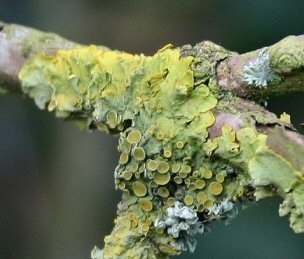
A branch of elder with the yellowish lichen Xanthoria. This species is usually found only where there is a lot of nitrogen so it is common on rich barked trees such as elder, and where birds roost or near livestock. (about 5x life size. photo AWD)

Great-spotted woodpecker © J. Caffrey
Scots Gill and Borough Woods in Winter
and
Shadfen Park (submitted by Ian Tapster)
Flowering plants, ferns and vegetation - under development.
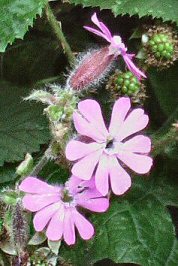
Silene dioica - red campion, one of the common woodland plants on rich soils. Photo AWD
Fungi - under development
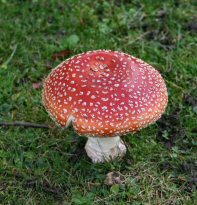
Probably the most easily recognised of the poisonous fungi found in the area - Amanita muscari. Amanitas have a veil below the cap and the stipe (stem) sits in a cup - watch for those two characters - and never eat a fungus that has not been identified by an expert. Photo AWD
Bryophytes - mosses and liverworts
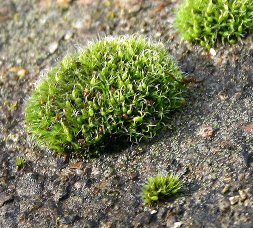
Invertebrates - insects. molluscs etc
